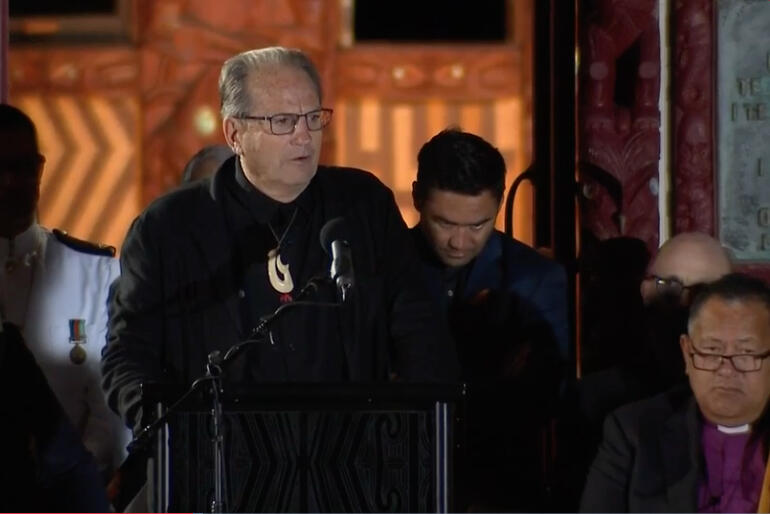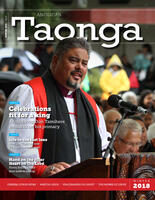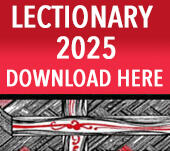
Anglican theologian and historian Dr Alastair Reese preached to thousands of people gathered for the Waitangi Day dawn service yesterday, offering his view of the Treaty of Waitangi as a sacred covenant between iwi Māori and the Crown.
Bishop of Te Hui Amorangi o Te Tai Tokerau, Rt Rev Te Kitohi Pikaahu invited him to speak in response to Dr Reese's teaching and service work with the Karuwhā Mission Trust, which leads groups of Christians on educational and service trips to visit marae and other sites of significance in the bicultural story of Aotearoa New Zealand.
Dr Alastair Reese’s sermon at the Dawn service on 6 February, Waitangi Day 2024 follows in full below:
He Honore He Kororia
He Maungarongo ki te whenua
He whakaaro pai ki nga tangata katoa.
Serendipitously at Turangawaewae Marae a short time ago, Archbishop Don Tamihere posed a rhetorical question, borrowed from Tina Turner.
He said, “What’s love got to do with it?”
According to our reading today the answer for the Archbishop’s question is, “Everything.”
Because love is the foundational ethic of Creation.
Further we might ask another question, “What has love got to do with Real Politik?”
According to our Creator’s instructions, everything.
For love is not just an injunction on Sunday, it’s the divine imperative for all of our actions, all of the time.
Further we might ask, what has love got to do with Te Tiriti?
Actually, this is the question I would like to respond to today, by reimagining the Treaty.
Not many of us will know that Waitangi began as a love story. Near here, a young woman, Maikuku was hidden in a watery cave by her whānau as they were hiding her from unwanted suitors.
However, she was discovered hiding there by a young man Huatakaroa. It was the revealing sound of a tangi, a call from deep within the waters of the cave, not far from here, that led him to Maikuku and to a marriage that spawned a new whānau identity, hence the name, Waitangi (Crying or weeping waters).
In these complex times of Real Politik, it’s difficult to comprehend that Te Tiriti o Waitangi was also originally a love story.
Queen Victoria responded to a tangi in the North, the sound of Ngā Puhi rangatira discontent with the unruly settlers from Europe. She proposed a Treaty.
The initial drama of that Treaty played out on these grounds over two days on the 5th and 6th of February 184 years ago.
On the night of the fifth of February after a night of heated debate, the chiefs gathered at te toa rangatira, to wānanga further, to discuss among themselves the Crown’s proposals. They were joined by the missionary, Henry Williams, or Karuwhā, the translator and the mediator of the Treaty.
Williams, there at the toa rangatira, to the gathered chiefs, communicated the British Crown’s response to the tangi of the North, and he told them.
“This is Queen Victoria’s act of love to you, she wants to ensure that you keep what is yours, your property, your rights and privileges, and those things that you value.”
As a result of the interchange that night, the Treaty was signed the next day.
Such was the optimism, one of the signatories, Ngāmanu, he prayed, “Haere mai ki Te Tiriti o Waitangi, haere mai ki tenei ao; haere mai me ngā hua kei roto ki a koe.”
“Welcome to the fruits that are in you,” he prayed.
Framed by Henry Williams who saw something of the divine hand in the Treaty, it was understood by many as a covenant.
For as the first signatory Hone Heke said,
“It is even as the word of God.”
He likened the Treaty to Te Paipera Tapu, the revelation of God’s love to Creation. The scriptures also define the nature of that love, it’s a cross-shaped ethic, where one is willing to lay down their life for the other. A covenant such as the Treaty is a sacrificial union. This is the kind of love that Williams referred to at te toa rangatira.
It is an ethic that seeks the best outcome for the other and to paraphrase the apostle Paul: love is patient, love is kind, love does not dishonour others, and love never fails.
In other words, Williams was committing Victoria’s representatives to always seeking the highest good for Māori. So, if the Treaty was an act of love by Victoria to Māori by extension, then it needs to also be an act of love by our government to Māori.
Love is the hermeneutical portal for understanding the Treaty, it is the interpretative key. Interpretation without love leads to a distorted vision. It leads to an arid legalism.
Kingi Taawhiao, he implied this. While the Treaty began as a love story, like all relational stories in real life, it was not without its issues.
Hollywood does not get to write our script.
It was not long before the fruits of Waitangi began to wither.
Hone Heke – of flagpole fame – he understood this.
Nōpera Panakareao understood this, as the shadow of the land shifted.
By the time Governor Grey sent General Cameron across the Mangatāwhiri in 1863, the fruit of the Treaty was positively rotten. The invasion was like an act of violence by an unfaithful spouse.
In response the influential Ngāti Hauā chief, the kingmaker, Wiremu Tamihana was moved to petition Queen Victoria, and he wrote,
Madam, your covenant came to this island and you said in good faith that the Maoris should retain their chieftainship, their mana and their lands…..These are your declarations…… And now O Mother, assert your authority – the authority which has been trampled on by Governor Grey and give us back our land, our chieftainship, and our mana of which the colonists and the Governor are seeking to deprive us.
Tamihana argued that the mana of the Crown was demeaned by the Governor because he had betrayed the covenant in the land, the Treaty.
This is the kairos moment for our nation.
A time when mana is being trampled.
It is time to honour the Treaty and unequivocally restore its mana.
It is time to restore the mana of the Crown.
It is time to also restore the mana of te iwi Māori.
And all the signatories and the witnesses of this tapu thing, even the church.
In 1934, when Lord Bledisloe gifted the land back to the nation, he called the Treaty a tatau pounamu, the doorway to reconciliation.
And then he prayed,
“O God, grant that this sacred compact here made in these waters would be faithfully and honourably kept for all times to come.”
I have a confidence that Lord Bledisloe’s prayer will be answered, because covenants are a God thing. They attract His attention.
In times past it has seemed that the Treaty might be dead.
Think of Judge Prendergast’s 1870 ‘simple nullity’ ruling.
But it has always surprised us.
This place where we gather here today is a symbol of the Treaty’s indomitable spirit.
In 1940, thousands gathered, and Sir Apirana Ngata at the opening of this great whare performed with hundreds of toa, the Te Rauparaha haka,
“Ka mate, ka mate, ka ora, ka ora.“
“It was dead, it was dead, but now it lives.”
I want to close with another tangi. A tangi that was uttered in 1990 by the late Bishop Whakahuihui Vercoe, paraphrasing Psalm 137 he said,
“By the rivers of Babylon, there we sat down, and there we wept when we remembered Zion.” He said it is much more expressive in Māori, and I take liberties with the scripture,
“E te taha o nga wahi o Waitangi noho ana tatou i reira a e tangi ana i to tatou maharatanga ki Hiona.”
Whakahuihui Vercoe said,
“As I remember the songs of this land, as I remember the history of this land, I weep here on the shores of the Bay of Islands.
May God grant us the courage to be honest with one another, to be sincere with one another, and above all to love one another in the strength of God.”
“So I come to the waters of Waitangi to weep for what could have been, a unique document in the history of the world of indigenous people with the Pākehā, and I still have the hope that we can do it.
Let us sit and listen to one another.”
No reira, tēna koutou, tēna koutou, tēna koutou katoa.

















Comments
Log in or create a user account to comment.